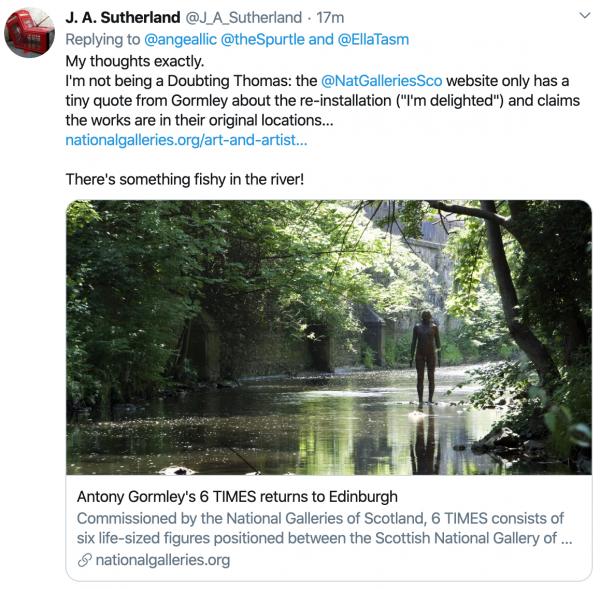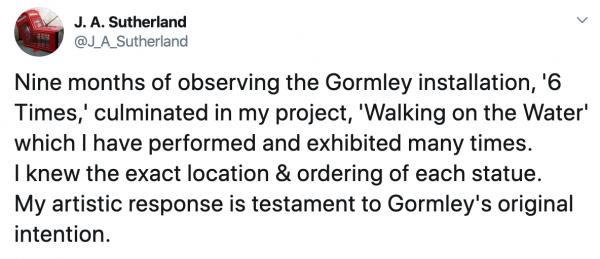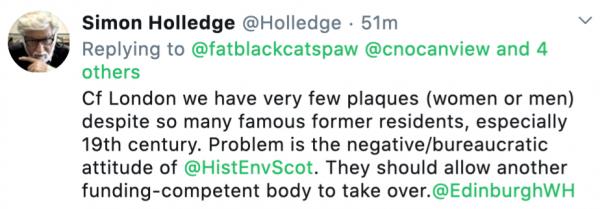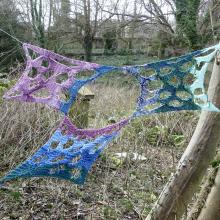
EXCLUSIVE
Something has changed about Antony Gormley’s Six Times along the Water of Leith. But so far, hardly anyone has noticed.
Originally installed in 2010, four of the pieces were removed in 2012 following repeated topplings by more-powerful-than-expected floods.
They were put back in the water in May last year, and although Spurtle didn’t manage to photograph all of them on the first day, we joined in the general affectionate response to their return.
It was always acknowledged that abandoning the pieces’ original tipping mechanisms in favour of a more permanent attachment to the riverbed would entail some minor adjustments in position.
But in general, the National Galleries of Scotland assured us, nothing important would change.
A reader writes
On Sunday, Spurtle posted a photograph on social media of the Anderson Place Gormley covered in foliage.
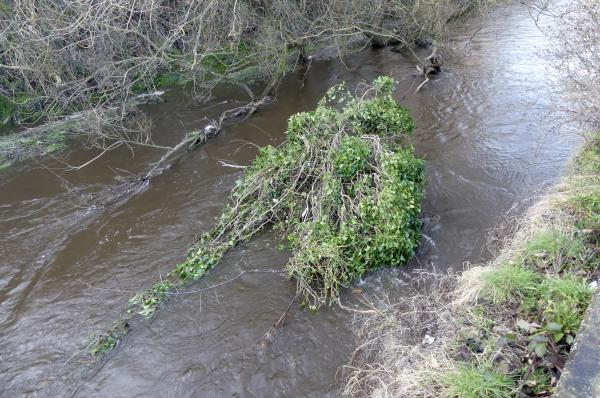
This prompted reader J. A. Sutherland to get in touch with an observation of his own, one which we thought at first was too fantastical to be fact.
We then checked Sutherland’s assertion and, to our surprise, realised he was right.
Weird but true
The Gormley in the water at Cauldron Weir was originally titled ‘Ground’. As first positioned in 2010, he faced the bridge and looked down reflectively at the still water.
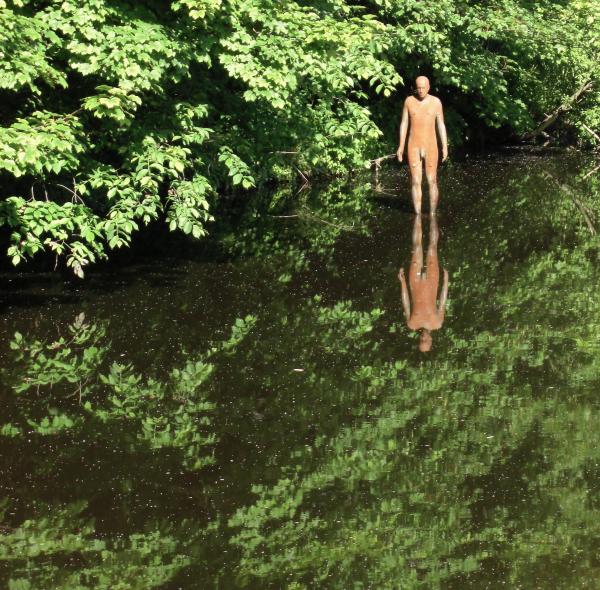
Since his return to the river, he has faced the weir and, intriguingly, looks up.

Since his return to the water last year, the Gormley at Stockbridge – originally titled ‘Sky’ – has looked down.
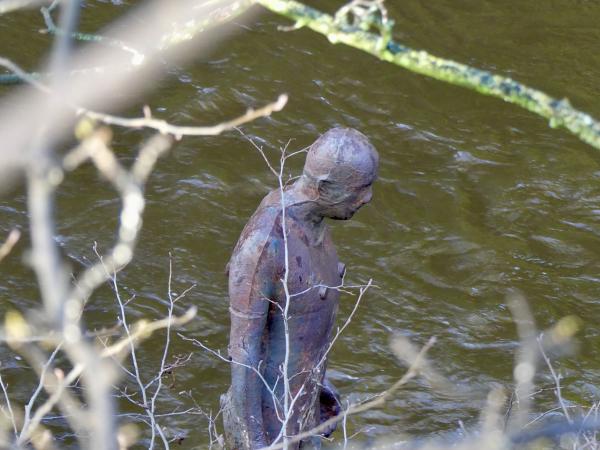
But when he was first positioned in 2010, he looked up as if reading the clock or acknowledging people on the busy street above.
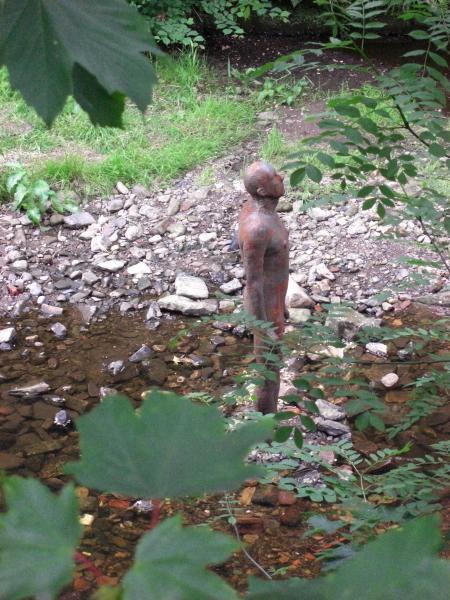
So, unless the Gormley figures have come to life and started moving about by themselves, one of three things has happened.
(1) They were wrongly situated in the first place. (2) They were wrongly relocated on their return last year. (3) The artist has had a change of heart about which one should go where.
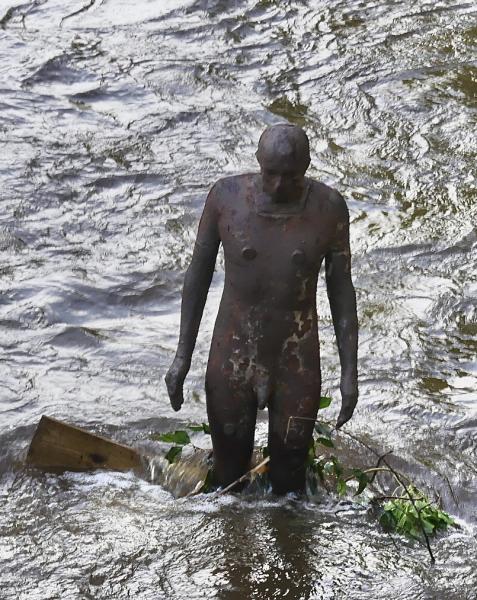 When in doubt, ask an expert
When in doubt, ask an expert
Any of these scenarios strikes us as odd given Antony Gormley’s insistence on the locational specificity of each piece when Six Times was launched.
Spurtle approached Simon Groom – the National Galleries of Scotland’s Director of Collection & Research: Modern & Contemporary Art – for an explanation.
He was full of praise this morning for Sutherland’s ‘amazing powers of observation’, saying he was among a very small number of people who have spotted the change.
Groom is quite clear, however, that the switch was deliberately planned and not a mistake.
Gormley, he says, asked for the swap as he preferred the first figure at Cauldron's Weir to be looking up ‘as if looking down the river in anticipation of the pieces to come’.
We asked Mr Groom to repeat this a number of times, but we still don’t understand it. It may have something to do with Gormley’s questioning attitude to traditional notions of sculptural stillness, but we’re not sure what.
Furthermore, effecting such a significant change without acknowledging it at the time strikes us as peculiar.
‘It’s a bit of magic,’ says Groom. ‘The fact that pieces may change position without you being told about it adds to their mystery.’
‘So can we expect them to move again in future?’ Spurtle asked.
‘No,’ Groom replied.
Hmm.
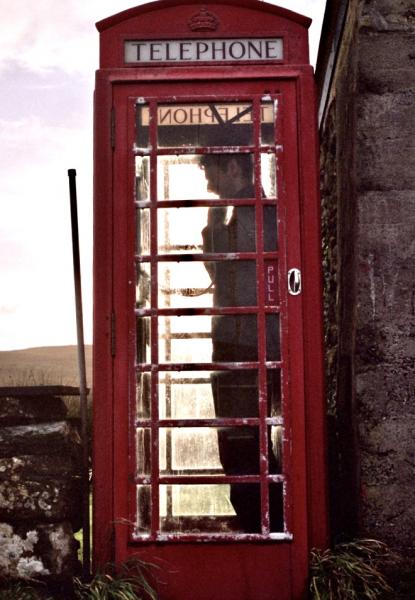
Observant writer
The amazingly observant J. A. Sutherland, who alerted us to this story at the weekend, is an Edinburgh-based writer, artist, performer, and collaborator.
He is a long-standing admirer of Gormley’s work, and on Six Times’s arrival in Edinburgh spent nine months considering its components in different seasons and weather conditions to better understand the combination’s multiple cultural and religious resonances.
The result was his acclaimed Walking on the Water which he has exhibited, published, and performed in many formats since. It addresses each figure’s particular gesture, orientation, and topographical setting.
Hardly surprising, then, that Sutherland was aghast when he spotted the switch in figures. It seemed to make no sense in the context of Six Times, and it rendered his own poem ‘obsolete’.
Today’s news will not come as any comfort to him. In fact, we suspect many across Edinburgh will be left feeling slightly vexed and bemused. Perhaps that was the point.
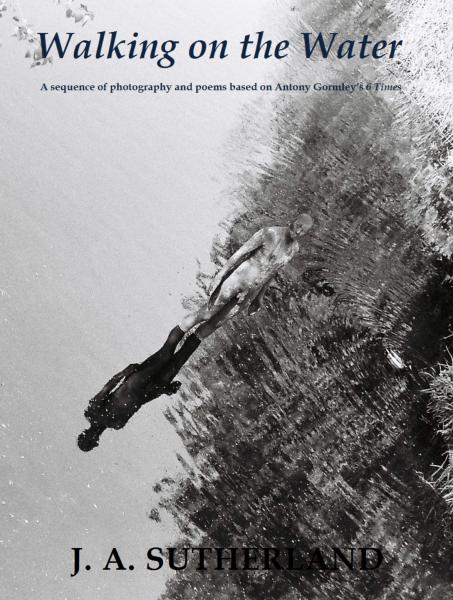
Got a view? Tell us at spurtle@hotmail.co.uk and @theSpurtle and Facebook
--------

